A Short History of Graveyards in the United States
- Peter

- May 5
- 11 min read
The story of American graveyards is a journey through time, culture, and landscape. From the humble colonial burying grounds to the vast, landscaped memorial parks and national cemeteries, these spaces reveal changing attitudes toward death, commemoration, and community. Join me as we explore the evolution of American graveyards, their cultural significance, and the stories they continue to tell.
Prehistoric & Colonial Beginnings: The First American Burial Grounds
These early graveyards, often called "burying grounds," were pretty straightforward. The markers were basic, sometimes just fieldstones, and the layout was all over the place. The main idea was to keep them close to the community rather than to make them look fancy or grand. When the first European settlers came to North America, they brought their burial customs with them, but the new environments and challenges they faced led to some changes in traditions. In the 17th century, burials were usually simple, with graves placed near churches, meetinghouses, or right within early settlements.
Ernest Witte Site (2700 BCE)
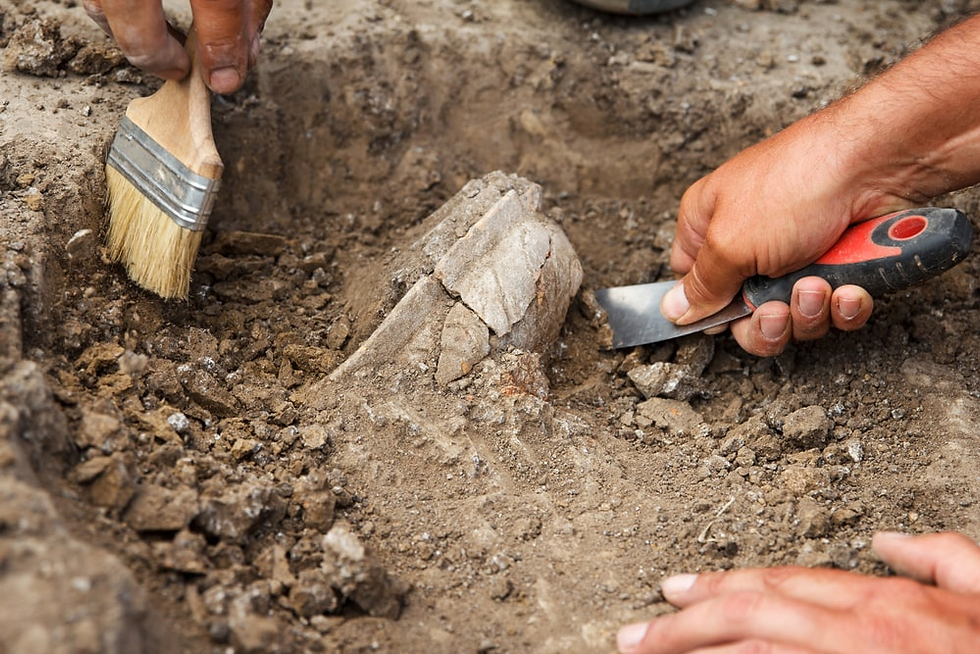
Believe it or not, one of the oldest burial sites discovered in the United States is in Austin County, Texas, near Houston. In the 1930s, youngster Ernest Witte and his brother dug a hole looking for buried treasure. However, instead of gold and silver, they uncovered human remains. Researchers investigated the area and discovered the skeletal remains of 238 people. They determined prehistoric burials had occurred in the area over 4,000 years (from 2700 BCE to 1500 CE)! While no grave markers exist in this cemetery, it’s considered the oldest discovered burial ground in the United States.
Grave Creek Mound (250 BCE)
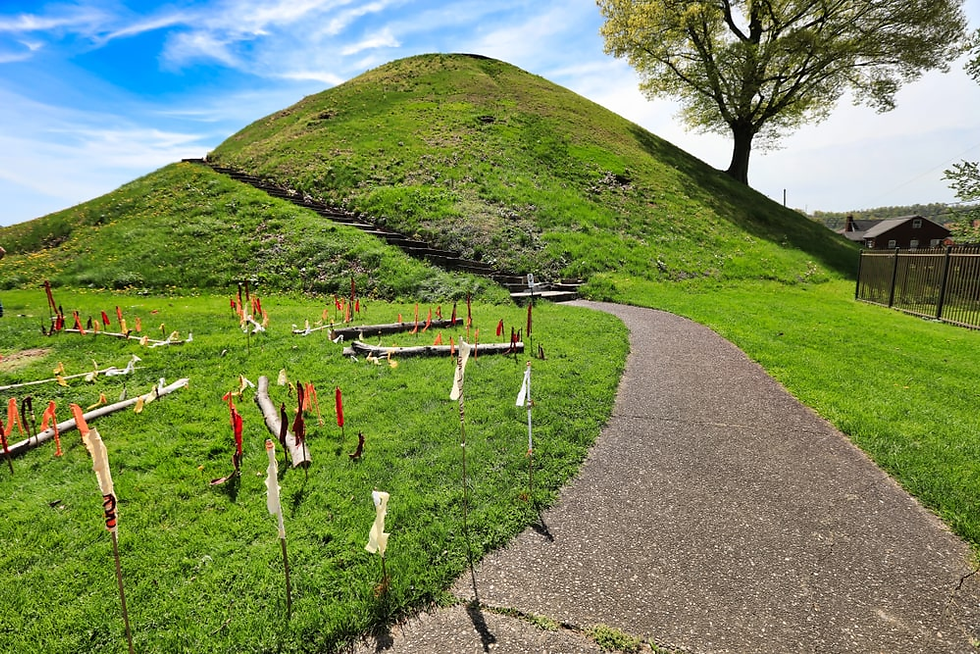
Another cool burial site in the U.S. is located at the northwestern border of West Virginia, near Moundsville. It's called Grave Creek Mound, and experts think it goes back to the Adena culture around 250 BCE. One of their funeral customs involved burying their dead in mounds.
What makes this mound really impressive is that it took the ancient people a massive effort to move nearly 57,000 tons of soil to build it. There are smaller mounds around, which had trinkets, jewelry, and other religious items that were probably part of their funeral rituals. Unfortunately, over the years, looters have dug into these mounds, and a lot of history has been lost.
Jamestown Original Burying Ground (1619):
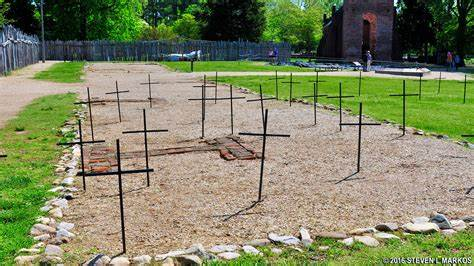
Among the first English burial grounds in what would become the United States, this cemetery in Virginia began as a necessity for the struggling colonists. Early burials were sometimes secretive, to avoid revealing losses to local Native American tribes.
Hancock Cemetery (1630s)
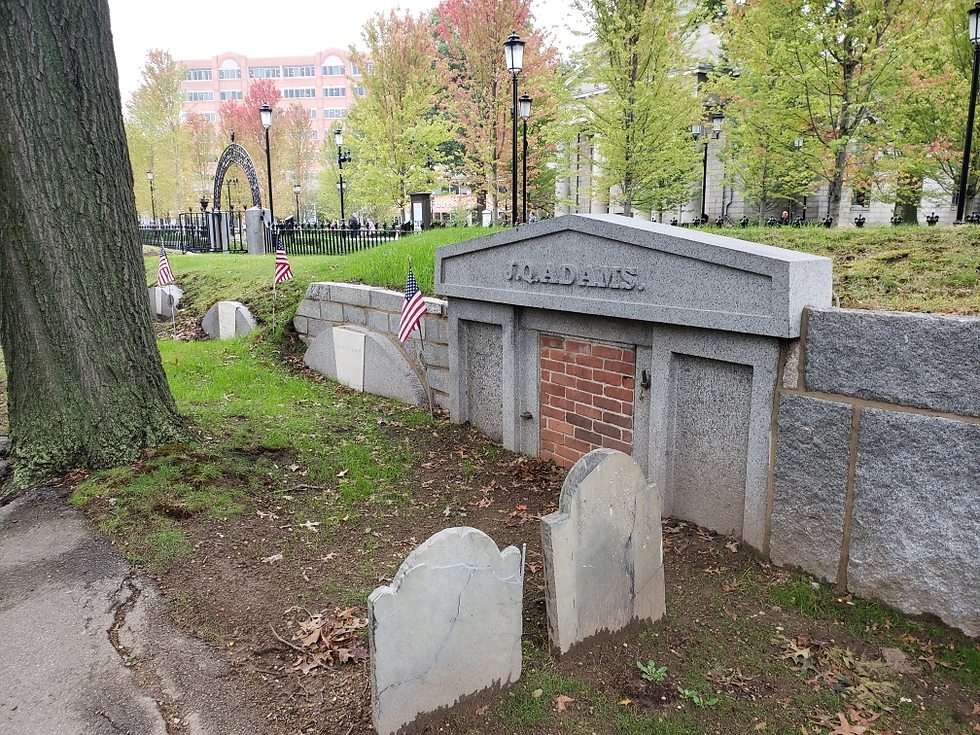
The Hancock Cemetery in Quincy, Massachusetts, has been around since the 1630s and was the main place for burials until 1854. The early Puritans took a pretty practical approach to death and burial. Many of the first grave markers were temporary, reused, and some disappeared over time, so there are a lot more people buried there than actual markers to show for it. The cemetery is home to graves of the Adams and Quincy families, plus Rev. John Hancock, who was the father of the famous patriot leader. Walking through, you can see a slice of American history and some amazing gravestone art, from the classic colonial winged skulls and cherubs to the Federalist styles and even some local examples from Quincy’s big 19th-century granite industry.
Charter Street Cemetery (1637):

Established before 1637, Charter Street Cemetery is the oldest European burial ground in Salem, Massachusetts, and among the oldest in the country. Indigenous burial sites that predate colonization are also found in Salem. This cemetery includes the only existing headstone of an original Mayflower passenger. According to the City of Salem, the oldest known gravestone dates from 1673 and belongs to Doraty Cromall.
Given that this is a cemetery in Salem, a settlement popularly known as "Witch City," you may think that some of the victims of the infamous Salem Witch Trials are buried here. While the accused were tried nearby, their remains would not have such a comfortable resting spot. Smithsonian Magazine reports that those who were executed for supposedly practicing witchcraft were sometimes buried in secret by family or else in an unmarked mass grave near the hanging place (via the City of Salem). They certainly weren't given a proper Christian burial next to the likes of witch trial judge John Hathorne (whose remains still lie in Charter Street Cemetery).
Granary Burying Ground (1660):

In the past, town officials used part of what was then Boston Common for burials to help with the overcrowding at King's Chapel Burying Ground nearby. The Granary Burying Ground got its name in 1737 when a small granary used for storing grain was moved to the spot where Park Street Church is now. They stopped burying people there in 1880.
Today, the Granary Burying Ground has about 2,345 gravestones and tombs, but it’s estimated that around 5,000 people are actually buried there. Most of the grave markers are made of slate, though a few are in greenstone or marble.
Originally, the gravestones were scattered throughout the grounds, but over time, they were organized into neater rows to match the 19th-century look and modern lawn care. In the mid-1800s, several landscaping projects took place, including the addition of walkways and the planting of trees and shrubs.
Inside the Granary, the remains of many Boston residents lie, including some famous folks—three signers of the Declaration of Independence, Samuel Adams, John Hancock, and Robert Treat Paine. The benefactor of Faneuil Hall, Peter Faneuil. The patriot and craftsman Paul Revere, revolutionary speaker and lawyer James Otis, and five victims of the Boston Massacre (which was not a massacre at all). Right in the middle of the ground, there’s a 25-foot-tall obelisk that marks the tomb of Benjamin Franklin’s parents.
From Churchyards to Rural Cemeteries: The 19th Century Transformation
The rise of Romanticism in the 19th century got people thinking about creating “nice” and “memorable” burial spots for the dead. In 1831, Mount Auburn Cemetery opened in Boston, Massachusetts, kicking off the Rural Cemetery Movement. Fanny Kemble, a contemporary writer, described it as more of a “pleasure garden” than just a graveyard, highlighting how it offered a beauty that made one almost wish for death.
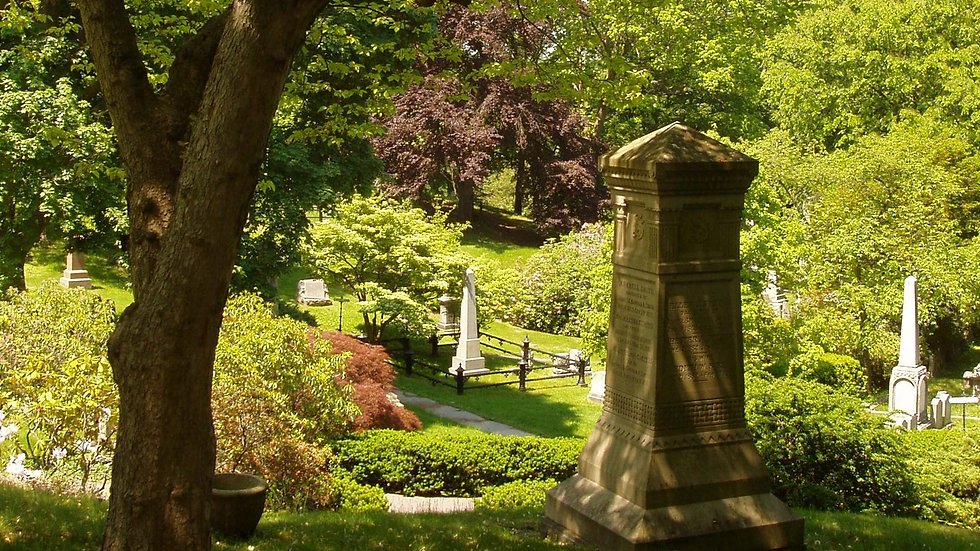
This growing focus on landscape, architecture, and aesthetics really changed American cemeteries. American architects borrowed styles and designs from British and French gardens to achieve this beauty when creating new burial sites. They took particular inspiration from Père Lachaise Cemetery in Paris, which opened in 1804. The rural cemetery movement spread quickly.
Cities across the country established their own versions—Laurel Hill in Philadelphia, Green-Wood in Brooklyn, and Forest Lawn in Los Angeles, to name a few. These cemeteries reflected changing values, emphasizing individual achievement and family legacy through elaborate monuments and mausoleums. This naturalistic approach helped create a “park-like” and romantic feel, showing how 19th-century Romanticism played a big role in shaping the Rural Cemetery Movement.
Unique Architectural Features of Famous US Cemeteries
American cemeteries are more than resting places- they are showcases of architectural innovation, landscape design, and cultural symbolism. Many renowned cemeteries across the United States feature distinct architectural elements that reflect the eras and communities they serve.
Graceland Cemetery, Chicago: “Cemetery of Architects”
Graceland is often called the “Cemetery of Architects” because so many famous designers like Louis Sullivan, Daniel Burnham, and William Le Baron Jenney are buried there and also
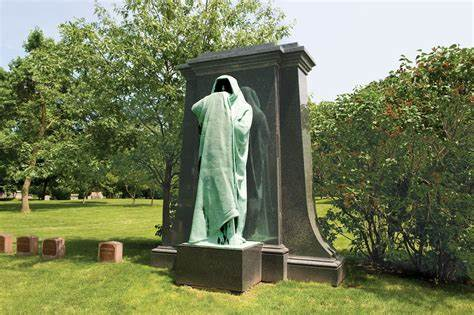
helped design it. The cemetery has some really cool sculptures, like Lorado Taft’s Eternal Silence, which is this eerie bronze statue. If you look into its hooded figure’s eyes, legend has it that you might see your fate! The contrast between the statue's black face and its green-patinated body makes for a striking sight. Plus, Graceland is known for its beautiful gardens and charming landscape, so it stands out as one of the prettiest green spots in Chicago.
Chapel of the Chimes, Oakland: Maze-Like Columbarium
Redesigned by Julia Morgan in 1909, Chapel of the Chimes is a Moorish and Gothic-inspired columbarium with a labyrinthine interior of rooms, winding hallways, and indoor gardens. The columbarium houses thousands of funerary urns, many shaped like books, creating a

serene, library-like atmosphere. Later expansions included Aztec-inspired elements, adding to the eclectic architectural tapestry. The chapel contains rare artifacts, such as illuminated manuscripts and a page from a Gutenberg Bible, blending sacred space with cultural heritage.
Cemeteries as Cultural Centers
In the 19th century, cemeteries were more than just places to bury people; they were popular hangout spots. Families would have picnics by the gravestones, artists would come to sketch the scenery, and speakers would hold talks during memorials. Rural cemeteries became symbols of community pride and reflections of the country’s aspirations.
St. Louis Cemetery No. 1, New Orleans
St. Louis Cemetery No. 1. Known as a “city of the dead,” the intricate and worn above-ground tombs tell tales of the larger-than-life figures resting inside. In many parts of New Orleans, the line between past and present feels really blurred, and this place is no exception.
It makes sense that St. Louis Cemetery draws over 100,000 visitors each year. Some folks

come to pay their respects at the grave of Voodoo Queen Marie Laveau, while others visit to take care of the graves of their loved ones (it’s still an active burial site). Many others just wander through the city’s oldest cemetery, established in 1789, to soak in its rich history.
A heads-up: unlike most other cemeteries in New Orleans, you can only access St. Louis Cemetery No. 1 through an official guided tour.
Woodlawn Cemetery (1863):
Located in the Bronx, Woodlawn Cemetery is one of the largest cemeteries in New York City. It opened as a rural cemetery in 1863, “out in the country,” in what was then southern Westchester County, which was annexed to New York City in 1874.
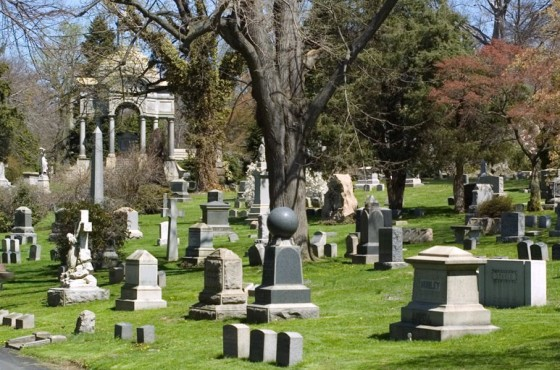
Built on rolling hills, its tree-lined roads lead to quite unique memorials. In 1967, what is generally believed to be the first community mausoleum on the East Coast of the United States was built at Woodlawn. The concept has proved extremely popular, and as a result, many other cemeteries throughout the United States have since added such structures. Woodlawn became a National Historic Landmark and is known for its ethnic diversity and impressive monuments, including a memorial to the Titanic.
The Rise of National Cemeteries: Honoring the Fallen
The Civil War marked a turning point in American burial practices. The sheer scale of death required new solutions.
Birth of the National Cemetery System
The first national cemeteries were established in the early 1860s to bury Union soldiers. By 1870, nearly 300,000 soldiers were interred in 73 national cemeteries. In 1862, Congress authorized the President to purchase land for cemeteries for those who died fighting for the United States. These cemeteries were often located near battlefields, hospitals, or troop concentration points.
Arlington National Cemetery (1864):
Perhaps the most famous, Arlington was established on the confiscated estate of Confederate General Robert E. Lee. It became a national shrine, with the Tomb of the Unknown Soldier as its centerpiece.
"By 1867, the growing concern about the conditions of these wartime interments led to a new effort to provide a proper burial for every US soldier and sailor who died during the war. The Office of the U.S. Quartermaster General established national cemeteries in central locations

such as Memphis, Tennessee, where they assembled remains from around the region for burial. Among the reinterments were soldiers from the United States Colored Troops."
Today, the United States has more than 175 national cemeteries, managed by federal agencies and serving as memorials to veterans of all wars.
Segregation and Inclusion
In 1877, President Rutherford B. Hayes withdrew federal troops from the South, ending the Reconstruction Era and beginning the Jim Crow era, which lasted until the Civil Rights Act of 1964. Jim Crow laws enforced racial segregation and relegated African Americans to second-class status, legally validating discrimination and economic oppression. Segregation under Jim Crow was widespread, affecting most public spaces, including cemeteries, across the country, not just in the South. These laws aimed to maintain white supremacy and reinforce the social and political structures of slavery
Many African-American cemeteries, like Washington Park, have fallen into disrepair due to various reasons. Weeds have overrun the land, making gravesites difficult to locate. Industrial developments, including buildings and highways, have disturbed graves. Although the Jim Crow Era seems a distant memory, its impacts are still visible in these sacred sites. The neglected state of these burial grounds suggests that many interred have been forgotten and marginalized in American history. Even in death, they continue to face the discrimination experienced in life, treated as second-class citizens.
Segregated Burial Grounds
In many regions, cemeteries were segregated by race and religion. In Charlotte, North Carolina, Elmwood and Pinewood cemeteries were separated by a physical barrier until 1969, when efforts to desegregate finally succeeded.
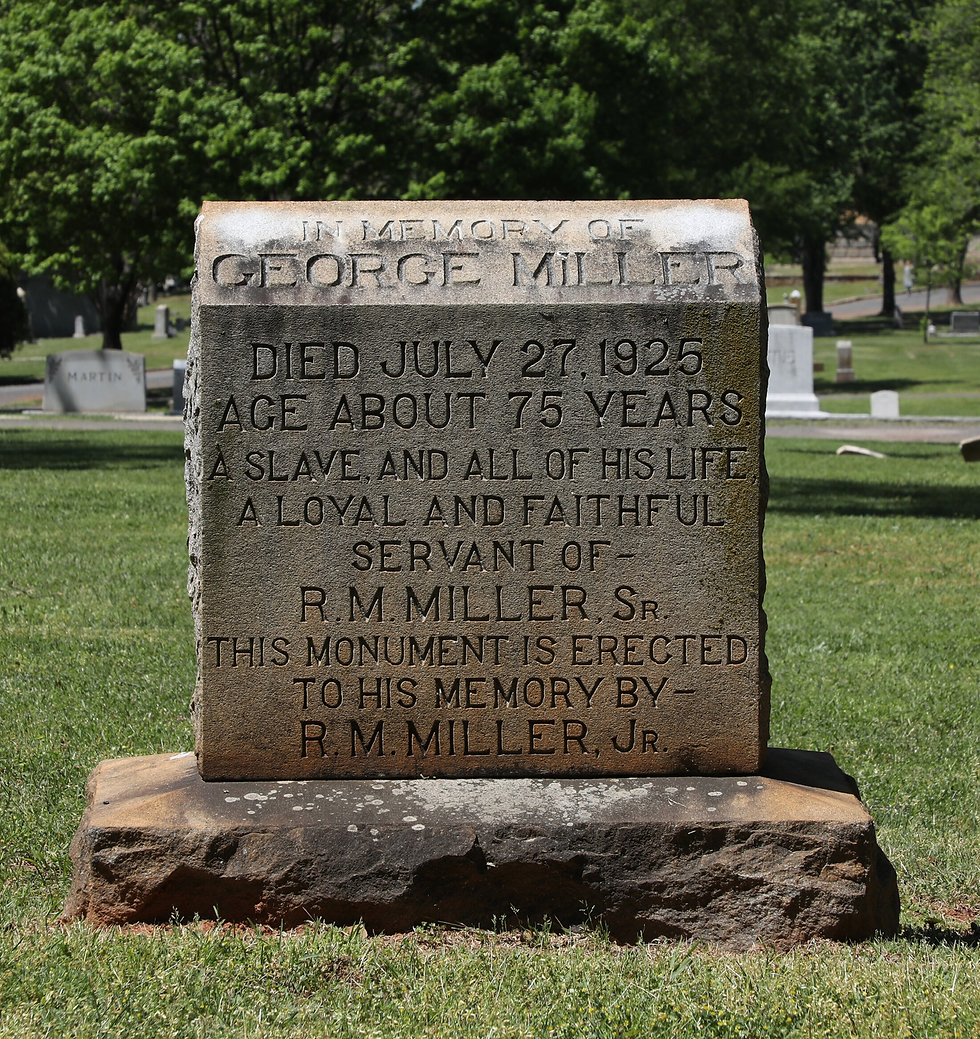
African American Cemeteries
Enslaved and free African Americans were often buried in separate, sometimes unmarked,
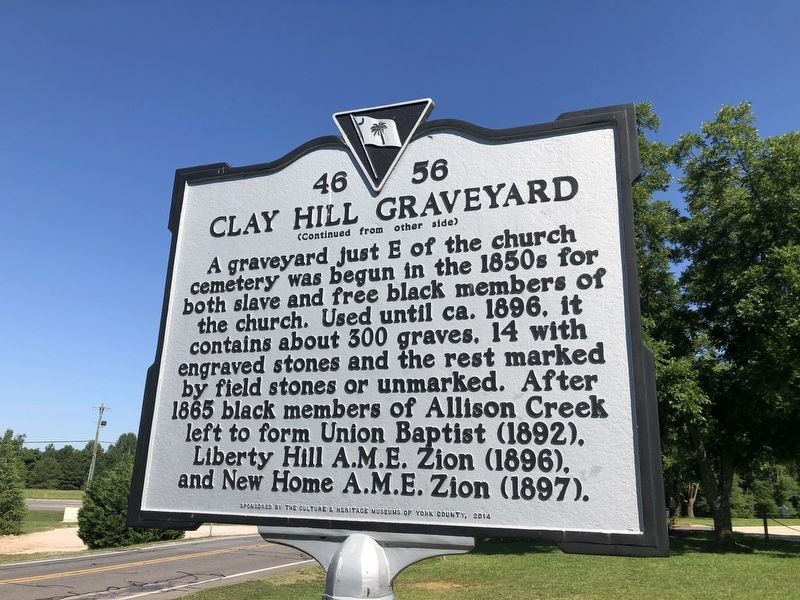
graveyards. For example, the Clay Hill Graveyard in South Carolina was used by African Americans from the 1850s until about 1896.
Religious Cemeteries
As immigration increased, ethnic and religious communities established their own burial grounds, preserving cultural traditions and identities.
Modern Memorial Parks and Cemetery Trends
In the 20th century, cemetery design shifted again. The "memorial park" movement favored open lawns, uniform flat markers, and a park-like atmosphere. This style was popularized by Forest Lawn Memorial Park in California and influenced cemeteries nationwide.
Largest Cemeteries Today
Riverside National Cemetery in California is 1,236 acres, the largest in the country. Calverton National Cemetery in New York has the most burials, with over 275,000 interments.
Wreaths Across America
Modern traditions, such as laying wreaths on veterans' graves, continue to honor the sacrifices of those buried in national cemeteries.
Cemeteries as Living History
Cemeteries remain vital to genealogists, historians, and communities. They are repositories of local and national stories—of triumph, tragedy, migration, and memory.
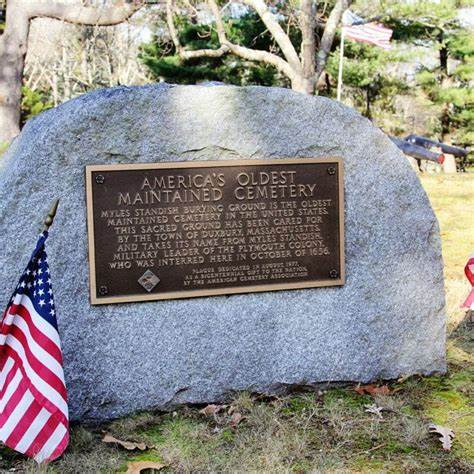
Restoration and Preservation
Many historic cemeteries have been restored and are now recognized as important cultural sites. The Duxbury Rural Society reclaimed the Standish Burial Grounds in Massachusetts, ensuring the preservation of Mayflower pilgrims' graves.
Public Engagement
Some cemeteries, like Mount Auburn and St. Louis Cemetery No. 1, offer guided tours, educational programs, and recreation opportunities, blending respect for the past with engagement in the present.
Conclusion: Graveyards as Mirrors of American Life
From old colonial burial sites to vast national cemeteries, the story of American graveyards shows how the country’s values and struggles have changed over time. These places encourage us to remember, think, and find meaning in the lives of those who came before us. Whether you're digging into your family history, looking for some historical context, or just wanting a peaceful spot to reflect, America’s cemeteries provide a unique glimpse into the past and remind us of our shared humanity.
Sources
· The Atlantic: "Our First Public Parks: The Forgotten History of Cemeteries"
· Colonial National Historical Park | 1607 BURIAL GROUND AT JAMESTOWN1
· American Forests: "In the Garden Cemetery: The Revival of America's First Urban Parks"2
· Travels with Talek: "Famous Cemeteries of the United States"3
· National Park Service: "History of National Cemeteries"7
· Funeral Basics: "10 of America's Oldest Cemeteries You Should Visit"9
· BillionGraves Blog: "The 10 Largest National Cemeteries in the USA"6
· Clarion County: "Burial Customs and Cemeteries in American History"11
· Mount Auburn Cemetery: Online Collections10
· Flickr: Mount Auburn Cemetery photo sets5
· Digital Commons: "The Rural Cemetery Movement: Places of Paradox in Nineteenth-Century America"8




Comments